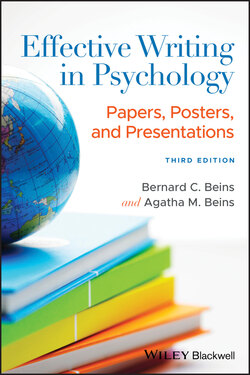Читать книгу Effective Writing in Psychology - Bernard C. Beins - Страница 35
The Difference Between Primary, Secondary, and Tertiary Literature
ОглавлениеBefore going into the specificities of popular and scholarly sources, we first distinguish between primary, secondary, and tertiary literature. Each category has distinguishing characteristics that you can use to determine the type of source you've found, but some sources may appear to fit within different categories. Therefore, it is best to conduct a holistic assessment of a book or article. For example, rather than looking only at the author of an article, the journal in which it appears, or the date of publication, consider the range of different criteria we outline in this chapter.
That is, when a researcher works with human participants through experiments or interviews, when they study nonhuman animals, or when they use archival material (e.g., letters, films, literature, popular cultural artifacts), the publication will constitute primary literature. These kinds of publications will introduce the research, describe the methodologies used, present the research results, analyze and interpret the results, and include references to the sources that shaped the research.
Secondary sources are those that are based on primary literature. Scholars often write articles that analyze experiments and research that they themselves have not conducted; such publications are often described as review articles. Although it is a secondary publication, these authors still may be making original contributions to their field. By putting a set of sources or studies in conversation with each other or by examining data through a different theoretical framework, they are offering an analysis of other authors' analyses, which can help readers understand primary literature in a new way.
Tertiary literature will most often not be scholarly, although it may be credible and written by a researcher. These types of sources consist of summaries of primary and secondary literature, so their purpose is to describe information and ideas written by others and not to present a thesis that an author develops and supports with their own research. Encyclopedias, Wikipedia, dictionaries, and textbooks are all examples of tertiary publications.
